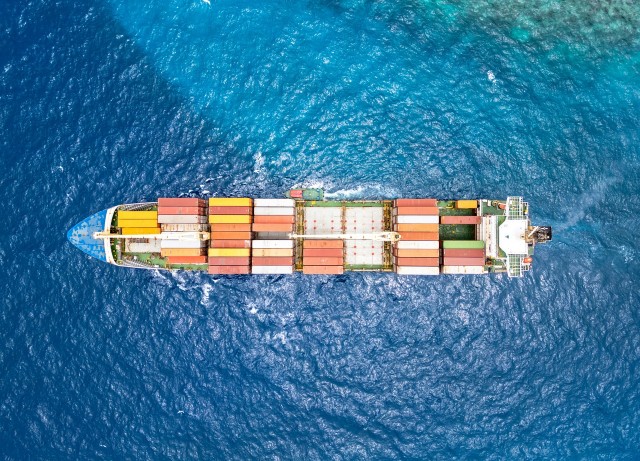- A new but contained trade war could bring nominal global trade growth below 5% in 2026 (-0.6 percentage points), putting at risk exports worth $67 billion in Europe and China in 2025-26 (half of the total).
- Tariffs on Chinese imports cost the EU $38 billion a year, compared to $17 billion a year for the United States.
- Italy: the expected additional exports in 2025-26, in a scenario of contained trade war, will be over 40 billion dollars.
- The next generation of trade hubs are forecast to increase their share of global exports by +1.6% over the next five years (reaching $1,274 billion).
Although global trade remains strongly linked to the US economy, China, thanks to its important role in global manufacturing and its large and growing domestic market, has emerged as a new superpower. In this context, according to new research by Allianz Trade, a world leader in trade credit insurance, Growing tensions between the United States and China are reshaping global supply chains and paving the way for new trading powers.
Guerra commercial turned back on con il return Of Trump at the presidency
In his second term as US president, Donald Trump is likely to increase tariffs on strategic imports from China and other countries (by 25% for China and 5% for the rest of the world, excluding Mexico and Canada), thus reducing nominal global trade growth by -0.6 percentage points in 2026, as most measures would take effect from the second half of 2025. China and the European Union would bear most of the costs, with exports at risk for 67 billion Of dollars In the 2025-26especially in the sectors ofindustry automotiveof the transport and gods metal. Their retaliatory measures could target the US pharmaceutical, automotive, metals, agri-food and engineering sectors.
“In the event of an all-out trade war (60% tariffs on China and 10% on the rest of the world, including Mexico and Canada), the damage to nominal global trade growth would increase by 2.4 percentage points, and China, Mexico and Canadaa would be the hardest hit, with cumulative export losses reaching nearly $217 billion over 2025-26. However, this scenario appears unlikely, as the United States would also face significant costs,” he declares Ana BoataHead of Economic Research at Allianz Trade.
The impact on the Made in Italy
Before the elections in the United States, the expected additional exports of Made in Italy in 2025-2026 were expected to amount to 44 billion dollars. However, with the likely subdued trade war looming, they are now expected to be $3.3 billion lower, down to $40.7 billion. In an extreme scenario of a full-scale trade war, Allianz Trade forecasts that additional exports in 2025-2026 would fall to $33.5 billion, $10.5 billion less than the previous estimate.
Il “godfathering” americano against the doctrine from the “seta” Chinese
Global trade is increasingly influenced by the competing geoeconomic agendas of the United States and China. While US imports have become independent from China, the latter has exported more to its geopolitically close partners (Russia, Singapore, Vietnam, United Arab Emirates, Saudi Arabia). In this context, bilateral trade between geopolitically aligned countries grew by +2 percentage points (620 billion dollars), reaching a share of 60% of global trade in just two years.
“The Chinese ‘silk’ doctrine, centered on trade and industry, has relied primarily on soft power and the influence of connections, while American ‘godfathering’ rests on four pillars: (i) the commitment unshakable a protect The interests national fundamentals a everyone i costs, (ii) to warranty Of loyalty within from the net Of allies historians, (iii) and attitude economic e military action against rivals and (iv) the expansion of American influence and control into new areas such as space, technology and AI. Regardless of who wins the US elections, this conflict is destined to continue.”explains What Kuhanathan, Head of Corporate Research di Allianz Trade.
The alignment con The States United entails and cost high per l’UE
Although the US and the EU have a common position on geopolitical issues, their economic interests are not aligned. Nonetheless, when the US imposes tariffs on China, the EU tends to do the same – usually the following year – even if this comes at a higher cost to China, according to Allianz Trade calculations. Tariffs imposed on China cost the United States $17 billion a year (4% of Chinese imports), compared to almost 38 billion dollars per year in the EU (6.4% of Chinese imports). Furthermore, the EU itself is not safe from US protectionist measures and there is a risk that the US and/or China will follow a strategy divide and ruleexploiting Europe’s internal divisions to pursue bilateral agreements that would improve its negotiating positions vis-à-vis the bloc.
New trade hubs are emerging as winners, but they are making global supply chains more complex
In the coming years, global trade is likely to grow below its long-term average (+3.0% in 2025 and +3.1% in 2026). At the same time, Allianz Trade’s Supply Chain Complexity Index shows that global trade flows are becoming more intricate, with levels of complexity doubling since 2017 and 6 times higher than during the pandemic years. In this context, Allianz Trade identifies 25 economies that could benefit from the new geoeconomic order, given their relatively higher competitiveness compared to China in the context of an intensified US trade war.
“Beyond all economy in quick growth come India, This change ha open the porte a nations such as Vietnam, Malaysia, Indonesia ed United Arab Emirates That they could become The hub new generation commercial. We expect these economies to increase their share of global exports by +1 percentage point over the next five years, reaching i 930 billion dollars. As these hubs grow to account for 16% of all global exports by 2029, they will also need to invest as much as $90 billion in port infrastructure alone to maintain their momentum.”he adds Françoise Huang, Senior Economist for Asia Pacific and Trade di Allianz Trade.
Choose and That part stare In the new order geoeconomic
By looking at the next-generation trade hubs and cross-border geopolitical, trade and investment ties that other major economies have with the United States and China respectively, Allianz Trade calculates geoeconomic distance scores to both countries. These scores show that China’s sphere of influence includes more of the emerging world’s next-generation trading hubs, while the majority of the Western bloc remains closer to the United States.
Not surprisingly, the country closest to the United States is the United Kingdom, followed by Ireland and the Netherlands, with Canada in fourth place and Mexico only 28th. Most African and Asian nations are closer to China: on average 0.5 versus 0.7 distance with the United States for African nations and 0.4 versus 0.6 distance with the United States for African nations Asian. But after Hong Kong, Canada appears to be the second closest economy to China, managing to remain not far from both superpowers.
“Australia, Corea of the Sud e Greece I am Between the other nations That I am succeed a maintain the itself distance from both the United States and China. These countries are geopolitically closer to the United States, but maintain very strong trade and investment relations with China. If the new geoeconomic order focused on the comparison USA-Cina should deteriorate in way significant, tale position could become increasingly uncomfortable and force them to choose a side.” finally explains Françoise Huang.


